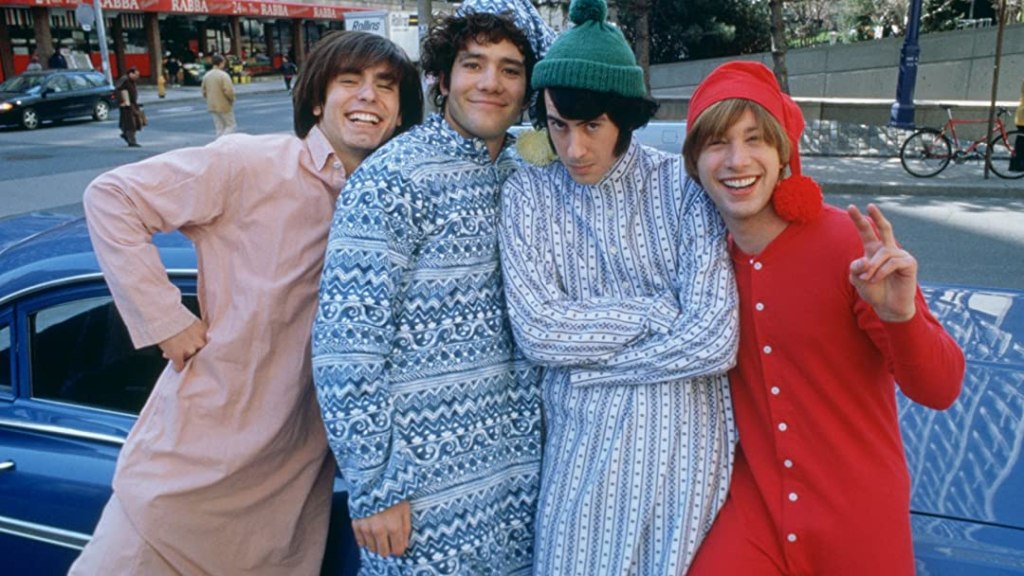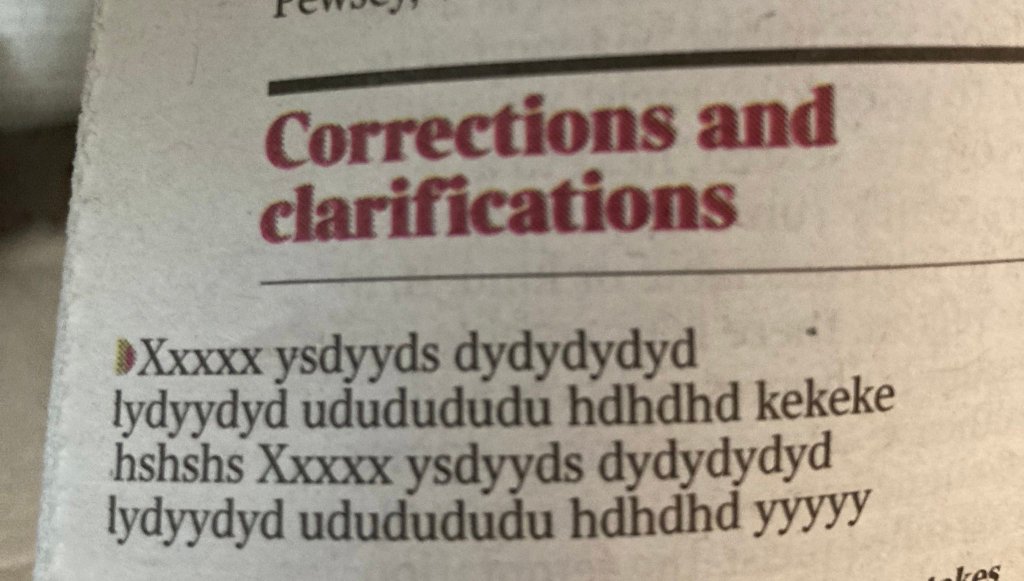Don’t you think it looks just like them? What, you don’t?

In an embarrassing incident in the Tribune’s news section recently, this picture was sent through by the picture desk to illustrate a story about Monkees memorabilia, went to the sub, who didn’t notice anything wrong, then into revise for me, who didn’t notice anything wrong, then to the production editor and duty editor, who didn’t notice anything wrong, then to the newsstand, whereupon almost everybody immediately pointed out that – yes – those aren’t actually the Monkees.
This always happens on large pictures on page three, doesn’t it? Never to little ones in the Nibs. Anyway, these are the four lead actors in Daydream Believer: The Monkees Story, a now little-seen and modestly rated biopic that came out in 2000.
I can’t even claim to have not looked at the picture. I was totally fooled by Davy Jones (George Stanchev), thought Michael Nesmith (Jeff Geddis)’s body language looked convincing, then stared at LB Fisher on the right of the group and thought “wow, Peter Tork looks young”. Not a trace of doubt in my mind. (In my defence, even Variety, while not very taken with the film, was reportedly impressed with the “close replicas of the original Davy, Mike, Micky and Peter”.)
Admittedly, once the inquest has begun, you immediately notice that Dolenz (Aaron Lohr) is perhaps a little less of a lookalike than the others. Also, there’s a distinctly modern-looking car in the background of the picture. Also, if you’re going to get seriously forensic about it, that shop in the background appears to be a branch of the convenience chain Rabba, which operates almost entirely in Ontario. (Although no reason, I guess, why the “prefab four” – as I discover they were wittily known – shouldn’t have been in Canada in the 1960s).
The BBC once broadcast footage of Bob Dylan that turned out to be of a Bob Dylan impersonator. I used to think that might have been because the person who chose the footage was one or even two generations younger than the fans who would notice. But I watched The Monkees myself when I was growing up, for heaven’s sake. All together now, as this blog has said many times, not least to itself: captions have a shorter path into print than any other component on a page.
All sorts of things can go wrong. The agency caption might be ambiguous. The agency caption might be wrong. The agency caption might be right, but nobody has read it closely enough. The revise sub is probably the last person who will read it closely before the readers do. So when you’re revising them, you can’t just be a believer. You’ve got to see their faces.

